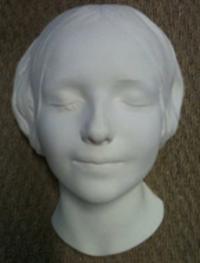The slimmed down Covid-19 version of Radio 4Extra's RadioLab programme (itself a repeat of the original NPR broadcast from the USA) brought to my attention a programme originally broadcast (in the UK) 2 years ago.
<autobiographical_note>
In the mid 1980s, when I was getting my First Aid at Work certificate, we were told that the first thing to do on approaching an unconscious casualty was to call out, as the sense of hearing is the last bit of consciousness to go (I'm not sure about this; maybe some other sense is the very last to go; but an apparently unconscious patient can still hear). So we always addressed the dummy as "Annie", which I assumed was based on the name of the dummy, Resusci-Anne.
</autobiographical_note>
But that RadioLab programme (the relevant section starts about 7'25" in) made me think again about the derivation of that "Anne". The English /æ/ phoneme used in "Anne" is not a million miles from the first syllable of the French "Inconnue", and the similarity increases in the context of the following nasal. It told...
...the story of an innocent young woman from the country who comes to Paris, who's seduced by a rich lover and then abandoned when she falls pregnant. With nobody to turn to, she drowns herself in the waters of the Seine, a modern Ophelia. At the mortuary, her beautiful face, now peaceful in death, is preserved forever with a plaster cast.
It was another drowning - or near-drowning - that ensured the Inconnue a place in medical history.
In 1955 Asmund Laerdal saved the life of his young son, Tore, grabbing the boy's lifeless body from the water just in time and clearing his airways. Laerdal at that time was a successful Norwegian toy manufacturer, specialising in making children's dolls and model cars from the new generation of soft plastics. When he was approached to make a training aid for the newly-invented technique of CPR - cardiopulmonary resuscitation, the combination of chest compressions and the kiss of life which can save the life of a patient whose heart has stopped - his son's brush with death a few years earlier made him very receptive.
He developed a torso or whole-body mannequin which simulates an unconscious patient requiring CPR. Asmund wanted his mannequin to have a natural appearance. He also felt that a female doll would seem less threatening to trainees...
Source
In Norwegian, the similarity ...
<inline_ps>...may be closer. A fuller treatment than RadioLab's was given in a BBC Magazine article in 2013 (already quoted from above, and given the intriguing headline The Mona Lisa of the Seine;)
between the Norwegian equivalent of "Anne" and the first syllable of the French Inconnue
</inline_ps>
Millions of people around the world have learned CPR on a mannequin known as Resusci Anne. The story of the 19th Century beauty behind the model - or at least, one version of it - will be told at a symposium in London to mark European Restart a Heart Day. But does anyone really know anything about her?
...[!I]f you're one of the 300 million people who's been trained in CPR, you've almost certainly had your lips pressed to the Inconnue's.
5 years later ( or maybe a bit more in the case of the original US broadcast) that figure hadn't changed;...
<old-numbers>
As CPR has been taught for nearly 70 years, that 2013 figure might have been expected to increase by at least a few hundred thousand since then. The "300 million people who'[ve] been trained in CPR" seems to be a rather sticky one. But still; what matters (to my understanding at least) is that they've all used a version of the same dummy, and that the dummy's based on a death-mask.
L'inconnue de la Seine
</old-numbers>
... but anyway it's a large number.
Bye for now. I'll leave you with a chance Where've-I-heard-that-before? noticed on my daily walk the other day; the radio played the Polka from Smetana's Bartered Bride and I couldn't help comparing it with that staple of Belfast pub songs I'll Tell My Ma. Not identical by any means but close enough to remind me of the old Clancy Brothers/Tommy Makem version. (I didn't use this in the first sentence of this para. The introduction is a bit wordy. Skip to 0'9" if you just want to hear the music.)
b
Update 2020.05.06.13:00 – Added inline PS.
Bye for now. I'll leave you with a chance Where've-I-heard-that-before? noticed on my daily walk the other day; the radio played the Polka from Smetana's Bartered Bride and I couldn't help comparing it with that staple of Belfast pub songs I'll Tell My Ma. Not identical by any means but close enough to remind me of the old Clancy Brothers/Tommy Makem version. (I didn't use this in the first sentence of this para. The introduction is a bit wordy. Skip to 0'9" if you just want to hear the music.)
<thinks>
Perhaps I shouldn't always be wired for sound – give the birdsong a chance. This morning they were making such a din that I almost missed the rare passage of an aeroplane.
</thinks>
b
Update 2020.05.06.13:00 – Added inline PS.

No comments:
Post a Comment